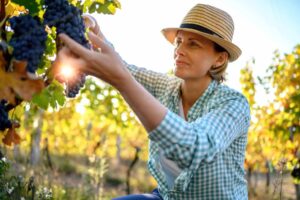Anteprima Sagrantino 2015, la rassegna che premia ed esalta il grande vino rosso Sagrantino di Montefalco DOCG proprio nella sua terra d’origine, l’Umbria, è giunta al termine anche quest’anno.
Tre giorni intensi, ricchi di tasting, esperienze sensoriali, presentazioni e concorsi vinicoli e culinari.
Anteprima Sagrantino è l’evento umbro che unisce e celebra la città di Montefalco (Perugia), che da sempre ospita la produzione D.O.C.G. del Sagrantino di Montefalco, unico territorio da disciplinare, atto a produrre questo meraviglioso vino rosso italiano. Niente di tutto ciò sarebbe stato possibile senza il cuore pulsante della produzione vinicola del vino Sagrantino: i produttori del territorio di Montefalco, che nella maggior parte dei casi, come noi di Montioni, si dedicano a questo lavoro da generazioni.
Il Consorzio Tutela Vini di Montefalco, è l’ente di riferimento e organizzatore dell’evento Anteprima Sagrantino: grazie ad esso è possibile il coordinamento tra produttori locali, autorità locali e città di Montefalco per realizzare questo evento unico!



Le Cantine di Montefalco
36 sono i produttori di vino Sagrantino che hanno partecipato alla rassegna in quel di Montefalco. Tante aziende agricole dal forte legame con la propria terra di origine, che sapientemente hanno saputo raccogliere le tradizioni famigliari di uno dei lavori più belli e antichi di Italia.
Direttamente nelle cantine di Montefalco, previo appuntamento, è stato possibile effettuare visite guidate e degustazioni di vino, mentre al chiostro di Sant’Agostino
La cantina Montioni è stata tra i partecipanti di questa rassegna vinicola famosa in tutta Italia, proponendo il suo Montefalco Sagrantino DOCG annata 2015, pronto per l’assaggio di giornalisti, enologi e sommelier accorsi tutta la penisola.

Come è stata valutata l’annata Sagrantino di Montefalco 2015?
L’anno 2015 è stato valutato, alla fine di questi tre giorni di Anteprima Sagrantino, come quello di una vendemmia incredibilmente positiva per diversi motivi: climaticamente, per via di temperature adatte e sufficienti piogge nell’anno di riferimento, dal punto di vista della qualità del prodotto, e anche per ciò che concerne la quantità, assolutamente nella media.
Il Sagrantino di Montefalco DOCG Montioni quindi si preannuncia un vino rosso particolarmente interessante, che non vediamo l’ora di farvi provare direttamente a casa tramite il nostro negozio online!
Preciso al naso con l’impronta floreale ben viva rivela note di fiori di ibisco, fiori di agapanto e prugne blu. Corpo medio-pieno, tannini puliti e ben definiti nella matrice ed un finale limpido e ben equilibrato. Meglio dal 2022.
Decadente nel profilo sensoriale con note di fiori rossi, mirto selvatico, salvia e rosmarino. Corpo medio-pieno, tannini definiti ed egregiamente estratti ed un finale succoso e dall’ottima bevibilità. Meglio dal 2022.

Scheda tecnica
- Nome: Umbria Grechetto I.G.T. Montioni
- Tipologia: Vino bianco giovane
- Uve: Grechetto 100%
- Annata: 2021
- Temperatura di servizio: 10-12 °
- Gradazione alcolica: 13 % vol.
- Abbinamenti: Ideale per tutti i primi piatti, ottimo con pesce e carni bianche o semplicemente come aperitivo
- Consigli: Non necessita di pre-apertura prima dei pasti, ottimo in estate se mantenuto a temperature fresche.
Grazie al quotidiano online Italia a Tavola per il fantastico sondaggio!
Cin Cin davanti al mare a tutti!
On occasion, the winemaker may decide to leave them in if the grapes themselves contain less tannin than desired. This is more acceptable if the stems have ‘ripened’ and started to turn brown. If increased skin extraction is desired, a winemaker might choose to crush the grapes after destemming.
Wine is one of the most civilized things in the world and one of the most natural things of the world that has been brought to the greatest perfection, and it offers a greater range for enjoyment and appreciation than, possibly, any other purely sensory thing.
Ernest Hemingway Tweet
Removal of stems first means no stem tannin can be extracted. In these cases the grapes pass between two rollers which squeeze the grapes enough to separate the skin and pulp, but not so much as to cause excessive shearing or tearing of the skin tissues. In some cases, notably with “delicate” red varietals such as Pinot noir or Syrah, all or part of the grapes might be left uncrushed (called “whole berry”) to encourage the retention of fruity aromas through partial carbonic maceration.
The Grapes
The quality of the grapes determines the quality of the wine more than any other factor. Grape quality is affected by variety as well as weather during the growing season, soil minerals and acidity, time of harvest, and pruning method. The combination of these effects is often referred to as the grape’s terroir.
Grapes are usually harvested from the vineyard from early September until early November in the northern hemisphere, and mid February until early March in the southern hemisphere.
In some cool areas in the southern hemisphere, for example Tasmania, harvesting extends into May. The most common species of wine grape is Vitis Vinifera, which includes nearly all varieties of European origin. The most common species of wine grape is Vitis Vinifera, which includes nearly all varieties of European origin.

Manual harvesting is the hand-picking of grape clusters from the grapevines. In the United States, some grapes are picked into one- or two-ton bins for transport back to the winery. Manual harvesting has the advantage of using knowledgeable labor to not only pick the ripe clusters but also to leave behind the clusters that are not ripe or contain bunch rot or other defects. This can be an effective first line of defense to prevent inferior quality fruit from contaminating a lot or tank of wine.
Destemming is the process of separating stems from the grapes. Depending on the winemaking procedure, this process may be undertaken before crushing with the purpose of lowering the development of tannins and vegetal flavors in the resulting wine. Single berry harvesting, as is done with some German Trockenbeerenauslese, avoids this step altogether with the grapes being individually selected.
Crushing is the process when gently squeezing the berries and breaking the skins to start to liberate the contents of the berries. Destemming is the process of removing the grapes from the rachis (the stem which holds the grapes).
In traditional and smaller-scale wine making, the harvested grapes are sometimes crushed by trampling them barefoot or by the use of inexpensive small scale crushers. These can also destem at the same time. However, in larger wineries, a mechanical crusher/destemmer is used. The decision about destemming is different for red and white wine making. Generally when making white wine the fruit is only crushed, the stems are then placed in the press with the berries. The presence of stems in the mix facilitates pressing by allowing juice to flow past flattened skins.

Katerina Monroe
@katerinam • More Posts by Katerina
Congratulations on the award, it's well deserved! You guys definitely know what you're doing. Looking forward to my next visit to the winery!
